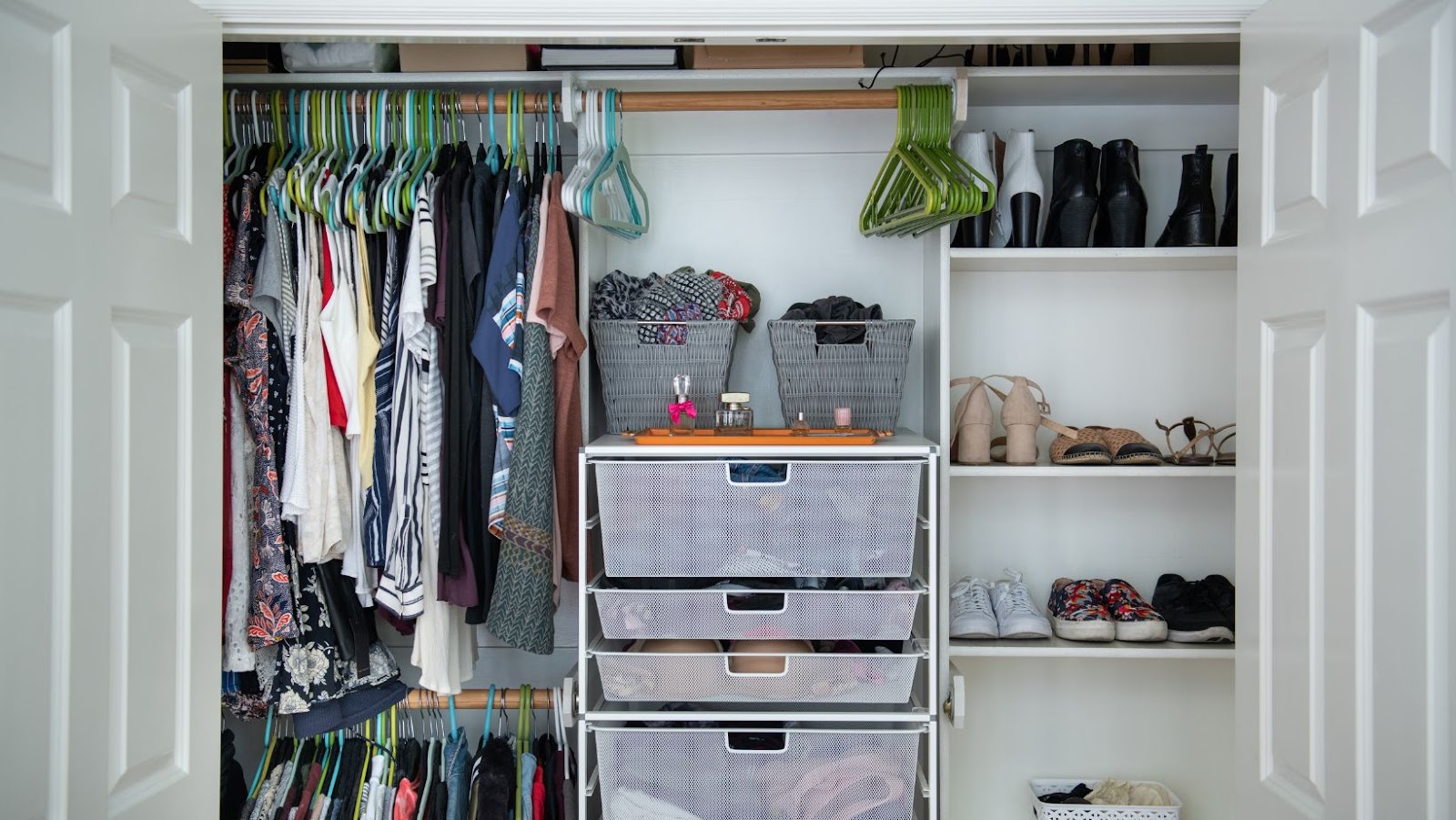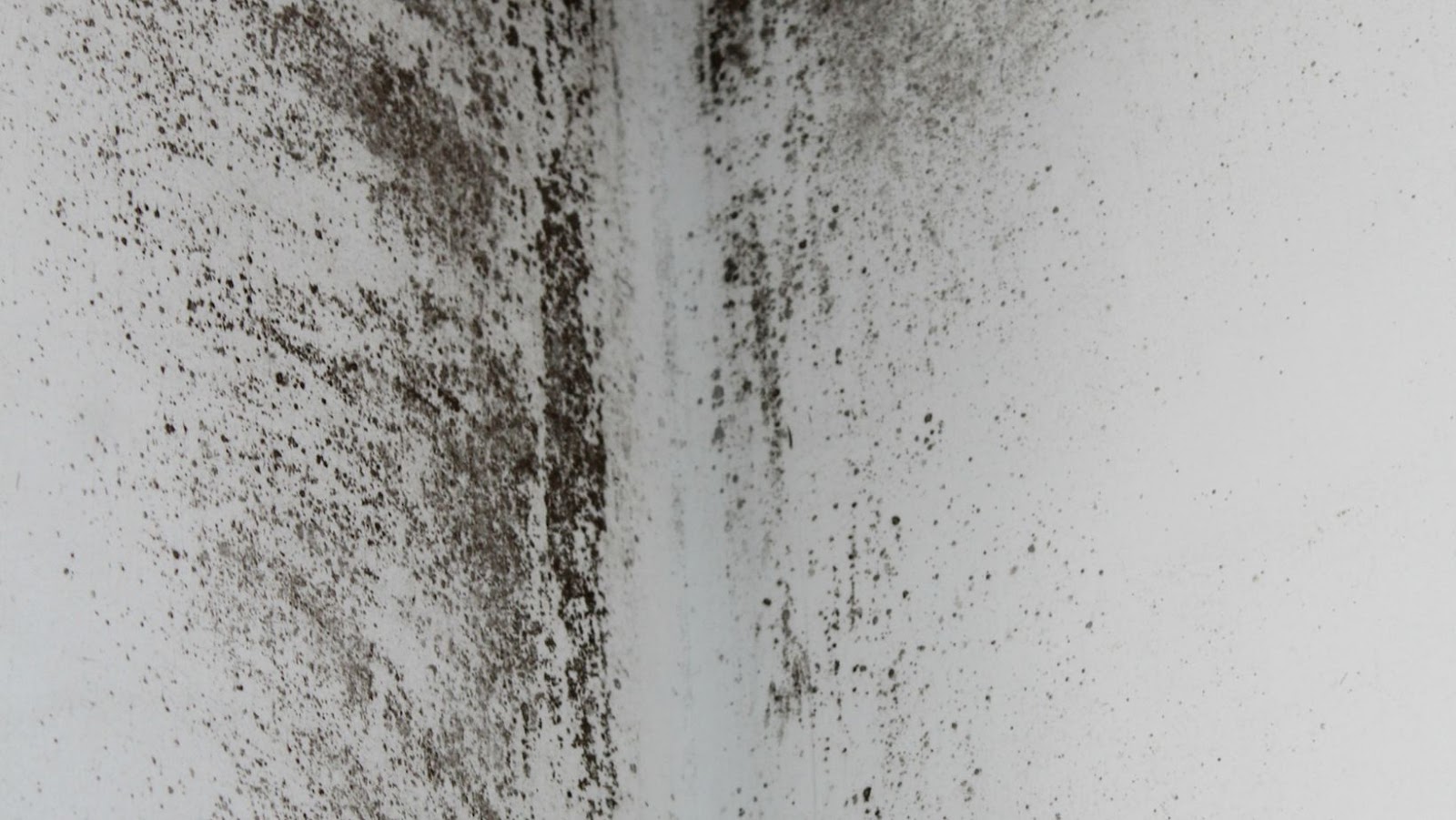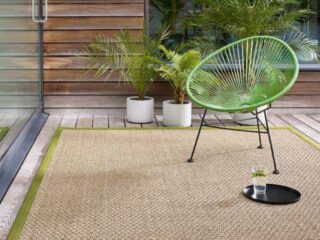
Mold growth in closets can be a common problem, especially in climates with high humidity and temperatures.
How to prevent mold in closet
The ideal conditions for mold growth consist of three important factors – temperature, moisture, and food source. Understanding what these factors are and how to control them can help you prevent mold growth in your closets and keep your closet clean and dry.
High Humidity and Moisture
One of the main causes of mold growth in closets is excess humidity and moisture. Temperature levels, type of material, and exposure to water and air are also factors in mold growth. Moisture is the primary cause, and it can come either from the air or seeping into materials through transmission from outside sources such as water leaks due to poor insulation, damaged seals on windows, or ceiling damage. Humidity levels exceeding 70% produce ideal conditions for mold to thrive.
High humidity also increases condensation on walls and ceilings, which can then collect inside closets that are not well-ventilated. Relative humidity should be maintained between 30% – 60% for optimal airflow without too much excess moisture or dryness indoors. A dehumidifier can help keep the air in your closet less humid if needed, and a fan helps circulate air around items stored in closets that don’t get used often.
In addition to controlling relative humidity levels inside your home, you should check for any places where water may be able to enter from outside sources such as leaks around window sills or doors or damaged walls. It’s also important to not store any items like damp towels on the floors in closets since these are items that easily attract mold spores if they remain wet too long– so find somewhere else where those items can dry out properly!
Poor Ventilation
Mold spores proliferate in warm, humid environments where there is poor ventilation which can easily occur in closets. This can be exacerbated by the presence of humidity-loving clothes, such as towels, or instances when the closet is used to store humidifiers and other damp items. To combat this, it’s important to make sure that air is freely able to move between the closet and the rest of a room. Installing an exhaust fan in a closet that is especially shielded from air currents can help ensure good circulation throughout the space. Additionally, opening a closet door or window on occasion to let fresh air in helps dissociate held moisture and reduces any further mold growth.
Poor Materials
In addition to lack of proper airflow, certain materials generally used for closets promote high levels of dampness. One example is untreated wood which contains high amounts of protein with natural sugars along with cellulose fiber which can be broken down easily by fungi. As a result, fungi have an easier time surviving within this material causing mold issues within closets built from untreated timber products. To prevent this from happening, consider sealing all surfaces inside closets with anti-mold paint or sealant every 3 years or so. Additionally, switching out wooden shelves with products designed from plastic that are water-resistant can provide additional assurance against moisture buildup and mold infestations over time.
Poor Drainage
Poor drainage is a key factor in allowing mold growth in residential closets. Insufficient or improperly designed drainage systems can cause mold growth due to high levels of moisture. Poorly constructed foundations or significant amounts of rain can also allow excess moisture to accumulate inside the closet space, which can then lead to mold growth. Proper drainage is key in providing an environment with low-humidity levels, as most types of mold will not grow in areas with little water.
Ideally, a home with basements and crawl spaces should have a continuous subsurface perimeter drain that will ensure any liquid from the exterior around the foundation or from rain water or snow melt is directed away from the house and not able to collect in pockets around the perimeter of the foundation where it can enter the closet space through cracks. It is also important to check for faulty drains and clogged pipes that cause water to pool near your house instead of flowing away, as well as regularly inspect gutters and downspouts for proper functioning and repairs when needed.

Prevention Strategies
Molds can be a major problem in closets, especially in humid and damp environments. Since mold needs moisture and warmth to grow, it is important to understand what the ideal conditions for mold growth are in order to prevent it from occurring in your closet. This section will look at prevention strategies for keeping your closet free from mold.
Keep closets dry and well ventilated
It’s important to keep closet spaces dry and well ventilated at all times. To prevent mold growth in your closets:
-Ensure proper ventilation: Make sure the closet has an open door or other openings for adequate air circulation. An exhaust fan that directs outside air into the closet can be installed if one is not already present.
-Reduce humidity in closets: Humid conditions can contribute to mold growth, so reduce moisture levels inside by using a dehumidifier or placing desiccants such as baking soda or silica gel packs in the closet.
-Protect stored items: Place plastic or wax paper over stored items to keep any dampness that accumulates inside the package contained and away from clothing and other items.
-Remove damp clothing immediately: After exiting a swimming pool or getting caught in the rain, take wet clothes off immediately and hang them up in an area with good airflow (not a closed off closet). Wash them as soon as possible.
By creating these conditions, you should be able to prevent mold from growing and creating potential health hazards within your closet spaces.
Install a dehumidifier
Installing a dehumidifier in your closet can go a long way in reducing the humidity and moisture levels inside. A dehumidifier helps to pull moisture from the air and maintain the ideal humidity levels for preventing mold growth in closets. Make sure to keep the dehumidifier well maintained by periodically cleaning it and making sure that it is working optimally. You can also purchase an electronic dehumidifier that has an automatic shut-off feature, which turns off when it senses a predetermined level of humidity has been achieved.
Also make sure to check if there is any leaking water pipe or water tap in your closet as this can also result in condensation buildup and encourage mold growth within your closet area. If you find any leaking pipes, it is best to contact a plumber immediately to repair any damaged pipes or taps before attempting to remove any mold growth present.
Use mold-resistant paint
Using mold-resistant paint is an important first step for preventing mold growth in your closet. This type of paint typically contains the fungicide zinc oxide. The fungicide works to stop the growth of mold, mildew and other fungi on treated surfaces. Applying a fresh coat of mold-resistant paint to interior closet walls will help prevent excessive moisture from accumulating and becoming a breeding ground for microscopic spores that are often present in the air. For optimal protection, it’s recommended to prime the surfaces with a type of oil-based primer that is designed for use with metal, wood or tile before applying the mold-resistant paint.
Keep items off the floor
In order to prevent mold growth in your closet, it is important to ensure that the area is kept dry and that the items in the closet are elevated off of the floor. Keeping items off the floor can help to reduce the moisture buildup in your closet as moisture easily accumulates on surfaces or items near floors or walls.
It is also important to keep your closet well-ventilated and make sure it stays dark as both light and fresh air can inhibit mold growth. Items should be spaced out so that air can circulate throughout the closet and prevent excess moisture from becoming trapped among them. In cases of excessive humidity, a dehumidifier may be necessary for complete prevention of mold growth.
Besides storing goods off of the floor and promoting air flow, homeowners should refrain from storing cardboard boxes as these are more susceptible to trapping developing mold spores due to their porous nature. Clothing should also be washed regularly (preferably with hot water temperatures) if stored for long periods of time in order to remove moisture before being placed in closets. Other items like outdoor gear such as backpacks, scuba equipment, diving suits, etc., should also be thoroughly dried before being put away into storage containers or closets. To reduce odors or musty smells often associated with mold, a box of activated charcoal can help your closet stay cleaner while staying fresh and odor-free at all times!
Treating Mold Growth
Mold growth in closets can be a serious issue, as it can cause health problems and damage to the closet. Fortunately, there are a few steps you can take to prevent mold growth in closets. This article will discuss the ideal conditions for mold growth and what you can do to make sure this doesn’t happen.
Clean and dry the affected area
The importance of cleaning and drying the affected area can not be underestimated when it comes to preventing any further mold growth in a closet. Start by removing any excess moisture and then scrubbing the area with warm, soapy water to remove as much of the existing mold as possible. Be sure to pay special attention to crevices and hard-to-reach areas where additional moisture may have accumulated over time. If a cleaning solution is necessary, choose a mild detergent that is specially formulated for this type of job; these are available in most stores.
Once you have finished cleaning the affected area, take steps to thoroughly dry it out. Open windows if possible; use fans or a dehumidifier to increase air flow and lower humidity in the room; place containers of baking soda or other adsorbents near potential problem areas; move heavily soiled items into an open area until they can be properly cleaned or disposed of if necessary; reduce furniture crowding and provide proper ventilation at all times. Follow these tips to prevent further mold growth in closets and other areas around your home.
Use a bleach solution or fungicide
Mold thrives in damp and humid places, so the key to preventing mold growth in closets is keeping them dry. The best way to do this is by using a dehumidifier or air conditioner that can help remove excess moisture from the air. However, if you want even better protection, it’s also a good idea to use a bleach solution or fungicide to ward off any potential mold growth.
Bleach solutions are an effective way to kill existing mold because of its ability to prevent spores from reproducing. You can make your own mixture of one part bleach and 10 parts water, then spray it onto surfaces with existing mold growth. Be sure to wear protective gear like gloves and eye protection when doing this to avoid contact with the harsh chemicals.
Fungicides are chemical products specifically made for fungi prevention and control and work especially well for hard-to-reach areas like corners, cracks and crevices where mold may hide unseen. For an even more effective solution, you can use both a bleach solution and fungicide as part of an integrated approach when preventing mold in your closet space.

Remove and replace any mold-infested materials
In order to effectively control mold growth in your closet, start by removing and replacing materials that have become infested. This includes visible surface-level materials such as wallpaper, carpet, fabric curtains or paneling that have become moist due to water activities such as leaky pipes or a humid environment. Non-porous items such as appliances may be salvageable with deep disinfectant cleaning recovery procedures. All items should be thoroughly dried and cleaned before being replaced to ensure mold is completely removed from the area and will not continue to grow.
Maintenance Tips
Mold growth in closets is something that you must be aware of and take steps to prevent. Mold in closets can cause health risks and damage clothing, fabric, and shoes. Fortunately, there are some simple maintenance tips you can use to make sure that your closet is not a conducive environment for mold growth. In this article, we will explore these maintenance tips and what you can do to keep your closet safe from mold.
Monitor humidity levels
It is important to monitor humidity levels in a closet or other enclosed areas to prevent mold growth. Humidity levels should remain below 55 percent to inhibit the growth of mold. High humidity levels provide ideal conditions for mold spores to thrive and reproduce, while any moisture trapped in an enclosed space increases the risk of uneven drying leading to condensation and an ideal environment for mold.
The best way to monitor humidity levels is with a hygrometer device designed expressly for this purpose. These devices measure relative humidity (RH) and issue alerts when RH levels exceed acceptable limits. The most commonly used hygrometers measure relative humidity in a range between 20 – 80%, though some are more precise, able to detect relative humidity even down at 1% increments.
In addition, it is important to continually check for visible signs of water damage… such as wet spots on walls and ceilings, musty odors or discoloration on walls or ceilings that may indicate the presence of leaks in pipes, clogged kitchen drains, water heaters or showers that could swell sufficiently as to cause damage even if only overnight drainage has not been properly corrected. Immediate attention should be given if any of these signs appear.
In order to reduce the risk of mold growth in a closet, it is essential that efforts be made not just in monitoring humidity but also controlling any possible water damage from leaking pipes or long-term drainage problems that have gone unchecked. By proactively checking these issues regularly and fixing them quickly when they arise you can minimize your chances of experiencing mold growth within your closets and other areas within your home or office space
Inspect the closet regularly
Maintaining your closet is the best way to prevent mold growth. It’s important to regularly inspect your closet for signs of mold growth, such as a musty smell or visible patches of mold spores. If you find any mildew or mold in your closet, be sure to remove it immediately using an appropriate cleaner and make sure the area is fully dried afterwards. Additionally, keep the interior of your closet clean and free from dust and debris that may serve as food sources for developing mildew or mold.
It’s also essential to keep the humidity levels low in the closet. An ideal humidity level for closets should be between 40-60%. Consider investing in an air dehumidifier/humidifier to help maintain proper humidity levels if needed. Be sure also to provide adequate ventilation in the space and open windows if possible to allow excess moisture to escape instead of getting trapped in the enclosed space inside a closet causing dampness that can potentially lead to mold growth.
Address any water damage immediately
Water damage in a closet or any other room of the house should be addressed immediately. If there is any visible water that has collected on the walls, this should be removed using household cleaning supplies. Once any standing water has been removed, use fans and a dehumidifier to make sure the area is as dry as possible. This will help reduce the risk of mold growth as mold spores require moisture to germinate and grow. A moisture meter can also be used to check for excessive humidity levels in a closet, which could speed up mold growth. Taking steps such as these to address any water damage in a timely manner is essential for preventing mold from developing in close quarters such as closets.





